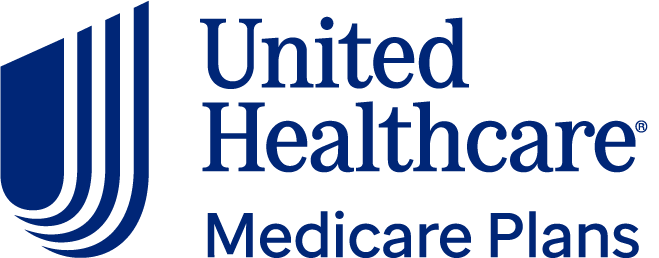What Is Medicare Part A? Coverage, Costs, FAQs
Medicare Part A is the hospital insurance portion of Medicare. For most people, it’s premium-free.

Many, or all, of the products featured on this page are from our advertising partners who compensate us when you take certain actions on our website or click to take an action on their website. However, this does not influence our evaluations. Our opinions are our own. Here is a list of our partners and here's how we make money.
Medicare Part A covers hospital care and other services, including skilled nursing facility care and hospice.
Most people pay no premium for Medicare Part A.
If you’re already receiving Social Security benefits, you’ll be automatically enrolled in Part A at age 65.
Once you sign up for Part A, you can no longer contribute to an HSA.
Medicare Part A covers hospital care and related services, such as skilled nursing facility care and hospice care. Unlike the other parts of Medicare, it’s usually available without a premium. Medicare Part A is a part of Original Medicare.
Here’s what to know about Part A coverage and costs.
What does Medicare Part A cover?
Medicare Part A is hospital insurance and typically covers costs related to inpatient hospital care, skilled nursing facility care, hospice care and home health services. Psychiatric hospital care also falls under Part A.
Here are the details:
1. Inpatient hospital care
Medicare Part A covers hospital services you get when you’re admitted to a hospital on doctor’s orders, including semi-private rooms, meals, general nursing and drugs for inpatient treatments. If you want care outside of Part A’s coverage, such as a private room or a private-duty nurse, you’re on your own to pay the incremental costs.
It’s also important to note that if you need admittance to a psychiatric hospital for mental health treatment once you’re on Medicare, coverage falls under Part A. You get fewer days of coverage — up to 190 days over your lifetime.
Fortunately, most hospitals accept Medicare, a criteria for using Part A. Note, however, that Veterans Affairs hospitals and other military hospitals usually take VA and military insurances, not Medicare.
Medicare Part A covers inpatient hospital care in a variety of facilities, including:
Acute care hospitals.
Critical access hospitals.
Inpatient rehabilitation facilities.
Inpatient psychiatric facilities.
Long-term care hospitals.
Inpatient care as part of a qualifying clinical research study.
Shopping for Medicare plans? We have you covered.

3.95
CMS Star Rating
from UnitedHealthcare

3.63
CMS Star Rating
2. Skilled nursing facility care
Part A covers your short-term care at a certified skilled nursing facility following a qualifying inpatient hospital stay of at least three days. Covered services include a semiprivate room, meals, skilled nursing care and physical and occupational therapy when needed.
Most other services needed for your wellness care are also covered, including:
Speech-language pathology services.
Medical social services.
Medications.
Medical supplies and equipment used in the facility.
Ambulance transportation to the closest supplier of needed services that aren't available at your facility (if other transport would endanger your health).
Dietary counseling.
Your medical team may recommend more services outside the scope of Part A. You would be responsible for those costs.

3. Hospice benefits
Hospice is the end-of-life care you receive if you're terminally ill. Medicare Part A covers all costs for a wide range of support care, pain medications and symptom management to make the patient more comfortable. Costs incurred for grief and loss counseling for you and your family as well as respite care for your main caregiver are also included.
Whether you're using Original Medicare or a Medicare Advantage plan, Medicare Part A covers the full range of hospice care and costs. Coordinate with your specific insurance plan for entry into hospice.
4. Home health services
People on Medicare who are homebound may get certain health care services provided right in their homes. Generally, a doctor must approve the situation and you must use a Medicare-certified agency. Covered services include part-time skilled nursing and home health aide care, occupational therapy, physical therapy, speech-language pathology services, medical social services and injectable osteoporosis drugs for women, among other things.
Use caution when planning for home health services. Medicare doesn't pay for 24-hour-a-day care at home, meal delivery, homemaker services (if that's the only care you need) or personal care — such as bathing or dressing (if that's the only care you need). And there is a lot of research necessary to make sure you know which services are covered under Part A and which ones would be your responsibility.
How much does Medicare Part A cost?
You qualify for premium-free Medicare Part A if you or your spouse has worked and paid Medicare taxes for at least 10 years, or 40 quarters. To determine your eligibility, use Medicare's eligibility calculator.
If you don't qualify for premium-free coverage, you may be eligible to buy Part A coverage. If you must pay for Part A, the premium is as much as $518 per month in 2025, depending on you and your spouse's work and Medicare tax history.
Aside from Part A premiums, there are other costs based on your health care use. The table below summarizes your share of costs when in the hospital or skilled nursing care. Depending on the specifics of your Medigap plan or Medicare Advantage policy, these costs may be covered by that insurance.
Medicare Part A costs
Services | Costs* |
|---|---|
Inpatient hospital care |
|
Skilled nursing facility care |
|
Hospice |
|
Home health services |
|
*Your share of Part A costs if you don't have supplemental insurance that covers these deductibles and coinsurance charges.
Other parts of Medicare — including Part C (Medicare Advantage plans), Part D (prescription drug coverage) and Medigap plans — are available through private health insurers approved by Medicare. If you sign up for a Medicare Advantage plan, an alternative to Original Medicare, it will include at least the same coverage provided in Original Medicare. However, you may be limited to a certain network and different rules may apply.
Who is eligible for Medicare Part A?
Generally, you're eligible for Medicare Part A if you meet one of the following requirements, according to Medicare:
You're age 65 or older.
You've received disability benefits from Social Security or the Railroad Retirement Board for 24 months.
You receive disability benefits because you have Amyotrophic Lateral Sclerosis, also called ALS or Lou Gehrig’s disease.
You have end-stage renal disease (ESRD) and meet certain requirements.
» MORE: How do I sign up for Medicare?
What’s the difference between Medicare Part A and Medicare Part B?
Medicare Part A is your hospital insurance, covering things like an inpatient hospital stay, and Medicare Part B is your medical insurance, covering things like doctor visits and durable medical equipment. While most people get Part A for free, Part B has a monthly premium.
Does it make sense to enroll in Medicare Part A and postpone the rest?
For those getting health care from a large employer, enrolling in Part A if you qualify for premium-free Part A and delaying the rest until retirement might seem like a smart idea — but there are caveats.
If you’re contributing to a health savings account and want to keep doing that, keep in mind that you can’t save money to an HSA once you’ve signed up for Medicare. If you start Part A at 65, you should stop HSA contributions before your 65th birthday month. If you sign up after 65, stop six months before you plan to enroll in Part A, because Part A coverage gets back-dated six months or to your 65th birthday month, whichever is closest.
Does Medicare pay 100% of your hospital stay?
No — although Medicare Part A covers a share of your eligible medical costs, you’re still responsible for some out-of-pocket costs unless you have a supplemental plan (Medigap) that covers them.
You’ll have to cover deductibles (and, potentially, coinsurance) if you’re hospitalized or in approved skilled nursing care. That deductible for hospital care is $1,676 in 2025 per benefit period, which starts on the day you’re admitted and ends when you haven’t received inpatient hospital care or care in a skilled nursing facility for 60 days.
If your hospital stay exceeds 60 days or your skilled nursing facility stay exceeds 20 days, you'll have to start paying coinsurance. If you enter a new benefit period after the previous one ended, you will pay the deductible again.
When should I enroll in Medicare Part A?
If you’re already receiving Social Security or Railroad Retirement Board benefits before age 65, you’ll automatically be enrolled in Original Medicare — including both Medicare Part A and Part B coverage — the month you turn 65.
If you are waiting to start Social Security benefits, you can separately enroll in Part A, Part B or both. Regardless of your choice, you must apply for coverage on SSA.gov.
Here's when you can enroll:
Initial enrollment period (IEP): This is the seven-month period starting three months before the month you turn 65, including your birthday month and ending three months after your birthday month. If your birthday is on the first of a month, your IEP begins four months before your birthday month and ends two months after.
Special enrollment period (if you qualify): Certain situations or life events will allow you to sign up for Part B and Premium-Part A outside of normal enrollment periods. These events include things like ending health coverage from an employer or missing sign-up due to a natural disaster.
General enrollment period: This runs from Jan. 1 through March 31 every year. If you didn’t sign up when you were first eligible and weren’t eligible for a special enrollment period, you’ll have to wait for the general enrollment period to sign up. Coverage starts the month after you sign up, and you may pay penalties for late enrollment. If you were to realize on April 1 that you needed to sign up for Medicare during the general enrollment period, you'd have to wait until January to sign up, and coverage would start in February.
» MORE: When does Medicare start?
Those who aren’t eligible for a special enrollment period and miss the initial enrollment period could face trouble. They may have to pay permanent penalties for the delay in coverage, and they’ll have to cover their medical costs out-of-pocket while they wait for the next sign-up period.
While there aren’t penalties for Part A if you’re getting it premium-free, there are penalties for enrolling late in Parts B and D, which grow larger the longer you postpone your enrollment. Before turning 65, make sure you understand the type of coverage you'll have available the month you turn 65 and whether you’ll be eligible for a special enrollment period.
The parts of Medicare
Read more about the different parts of Medicare and what they cover.










